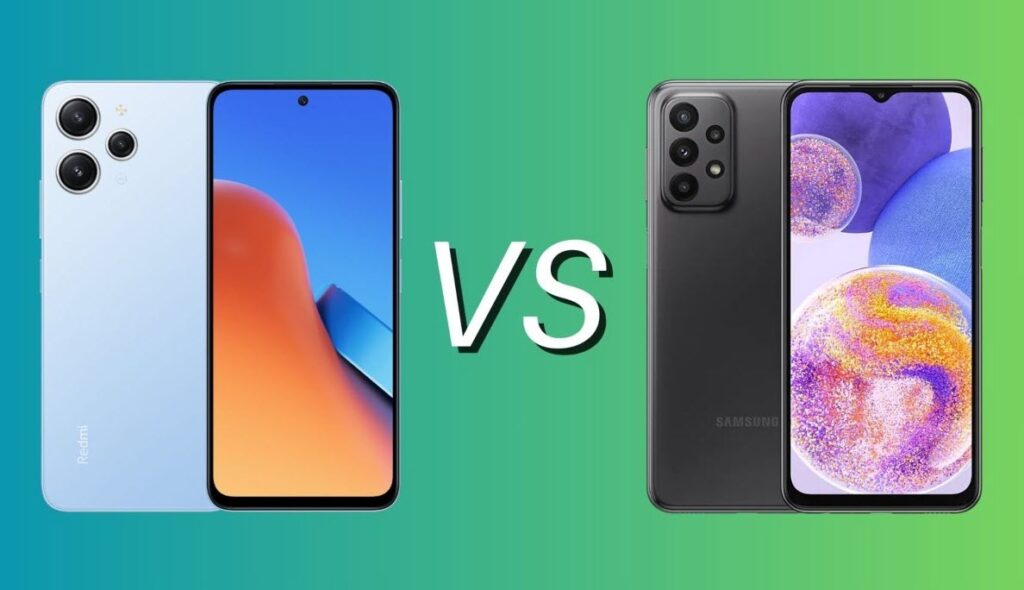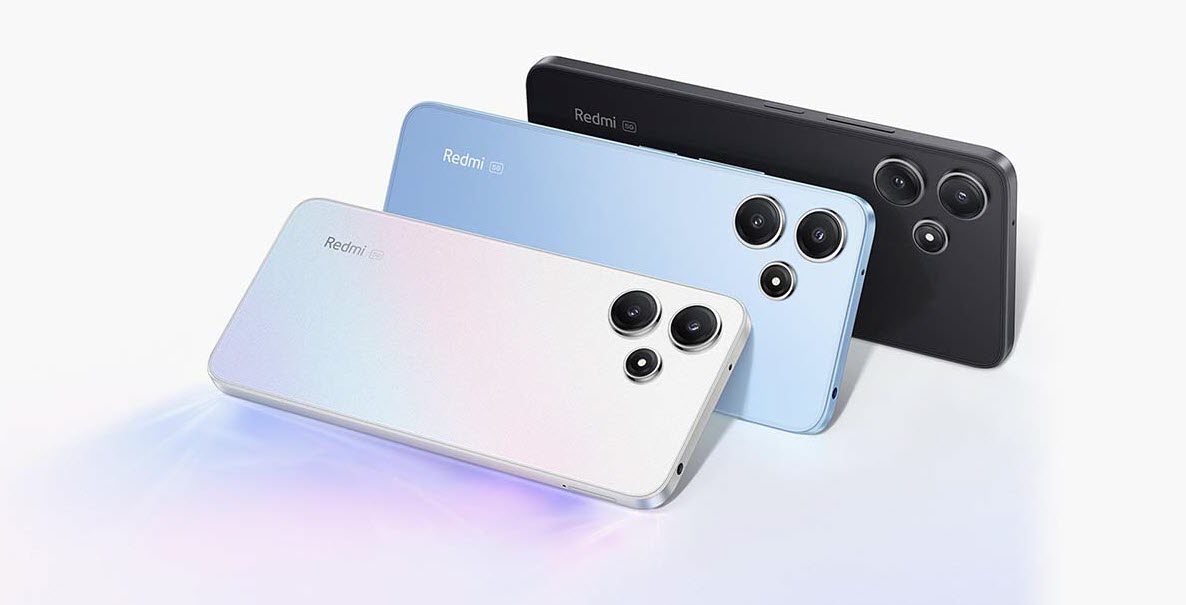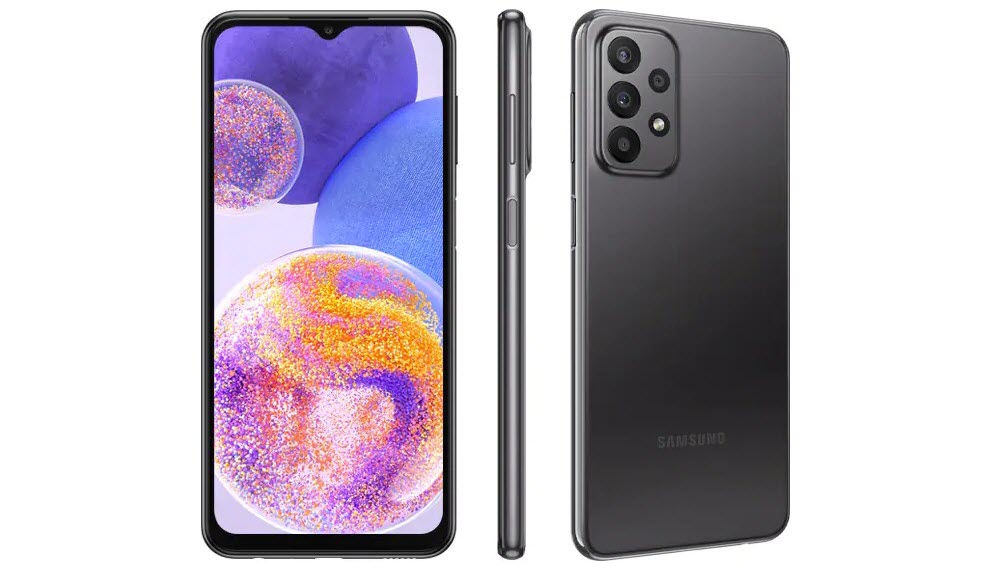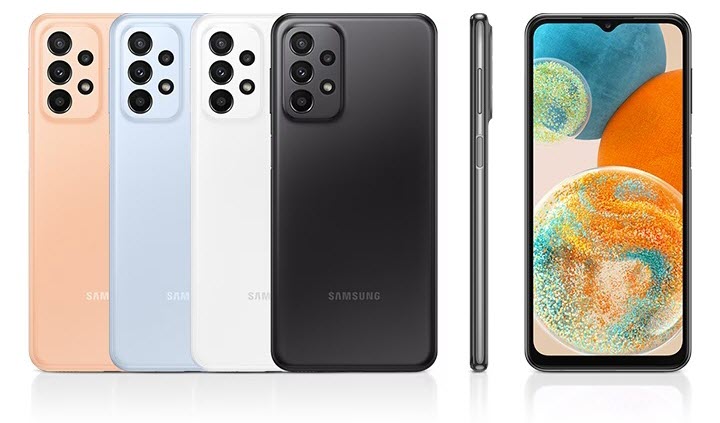Smartphones & Tablets | November 7, 2023

| Xiaomi Redmi 12 4G | Samsung Galaxy A23 4G | |
| Screen | 6.79 inches of IPS LCD technology, 20.4:9 format, FullHD+ resolution of 2,460 x 1,080 pixels, 90 Hz adaptive refresh rate (36/48/60/90 Hz), 240 Hz touch sampling rate, maximum brightness 550 nits and resistant Corning Gorilla Glass 3 | 6.6 inches of PLS LCD technology, 20:9 format, FullHD+ resolution of 2,408 x 1,080 pixels, 90 Hz refresh rate, 240 Hz touch sampling rate, 500 nits maximum brightness and Corning Gorilla Glass 5 |
| Main camera | – 50 megapixel main sensor with f/1.8 focal aperture with FullHD 1080p video recording capacity at 30 frames per second – Secondary sensor with 8 megapixel wide-angle lens with f/2.2 focal aperture – Tertiary sensor with lens 2 megapixel macro with f/2.4 focal aperture | – 50 megapixel main sensor with f/1.8 focal aperture and video recording capacity in FullHD 1080p resolution at 30 fps (frames per second) – Secondary sensor with 5 megapixel wide-angle lens with f/2.2 focal aperture – Tertiary sensor with 2 megapixel macro lens with f/2.4 focal aperture – 2 megapixel quaternary sensor for portrait mode (bokeh) with f/2.4 focal aperture |
| Selfie camera | 8 megapixel main sensor with f/2.1 focal aperture with video recording capacity in FullHD 1080p resolution at 30 frames per second | 8 megapixel main sensor with f/2.2 focal aperture and video recording capacity in FullHD 1080p resolution at 30 fps (frames per second) |
| Internal memory | 128 or 256 GB eMMC 5.1 | 64 or 128 GB UFS 2.2 |
| Extension | Available via microSD card up to 1TB | Available via microSD card up to 1TB |
| Processor and RAM memory | – Mediatek Helio G88 12 nanometers and eight cores at 2.0 GHz max. – 4 or 8 GB of LPDDR4 type RAM | – Qualcomm Snapdragon 680 6 nanometers and eight cores at 2.4 GHz max. – 4 or 6 GB of LPDDR4 type RAM |
| Battery | 5,000 mAh with support for 18W fast wired charging (charger included in the box) | 5,000 mAh with support for 25W fast wired charging (charger included in the box) |
| OS | Android 13 under MIUI 14 | Android 13 under One UI 5.1 |
| Connections | 4G LTE, dual-band Wi-Fi 802.11 a/b/g/n/ac, Bluetooth 5.3, GPS with A-GPS and GLONASS, NFC for contactless payments, FM radio, 3.5 mm jack for headphones and USB type C input | 4G LTE, dual-band Wi-Fi 802.11 a/b/g/n/ac, Bluetooth 5.0, GPS with A-GPS and GLONASS, NFC for mobile payments, 3.5 millimeter headphone jack and USB type C |
| SIM | Dual nano SIM | Dual nano SIM |
| Design | Colors: Black, Light Blue and Silver | Colors: white, black, blue and pink |
| Dimensions and weight | 168.6 x 76.3 x 8.2 millimeters and 198.5 grams | 165.4 x 76.9 x 8.4 millimeters and 195 grams |
| Featured Features | Side-mounted fingerprint sensor, facial recognition, infrared sensor for controlling external devices and IP53 water and dust resistance (splash-proof) | Side-mounted fingerprint sensor, facial recognition and Dolby Atmos |
| Release date | Available | Available |
| Price | From 130 euros | From 160 euros |
Recently, we compared the Redmi 12 to one of the best value-for-money mid-range smartphones. Now, let’s see how it stacks up against the Samsung A23. We will be analyzing the 4G versions of both phones, allowing us to determine which one is better based on their prices and features. Who will come out on top? We’ll find out in this Redmi 12 vs. Samsung A23 comparison.
Please note that the prices mentioned in this article may vary over time. Our analysis is based on the information available at the time of publication.

The Xiaomi Redmi 12 and the Samsung Galaxy A23 have very distinct designs, making them easily distinguishable at first glance. The Redmi 12 features a rear camera module with three sensors, with two of them being larger than the rest. This device also has a display with a typical punch-hole design for the front camera. In contrast, the Galaxy A23 has a quad-camera setup at the rear enclosed in a module that protrudes from the back. It also has a notched design on the front.
When it comes to build quality, there are more differences between the Redmi 12 and the Samsung A23. While the Redmi 12 has a glass back, the Galaxy A23 is made of plastic. Both devices have plastic frames, but the Redmi 12’s edges are flat, whereas the Galaxy A23’s edges are slightly rounded, making it more comfortable to hold. In terms of dimensions, the Redmi 12 is taller and slimmer but slightly narrower. It is also slightly heavier than the Galaxy A23, though the difference is minimal, not exceeding 4 grams.
The displays of both phones also have several differences. Starting with the Xiaomi Redmi 12, it features a 6.79-inch IPS LCD display with FullHD+ resolution of 2460 x 1080 pixels. It has an adaptive 90Hz refresh rate that can go as low as 36Hz depending on usage and a 240Hz touch sampling rate. The display also boasts a maximum brightness of 550 nits and is protected by Corning Gorilla Glass 3.
The Samsung A23 uses a 6.6-inch PLS LCD display with FullHD+ resolution of 2408 x 1080 pixels. It has a fixed 90Hz refresh rate (non-adaptive) and a 240Hz touch sampling rate. The display offers a maximum brightness of 500 nits and is protected by Corning Gorilla Glass 5, which is more advanced and durable.

The Samsung A23 and Redmi 12 have similar performance in both applications and games. However, the Redmi 12 has a slight edge in this department, making it smoother for day-to-day use. This is due to its more advanced Qualcomm processor. The Redmi 12 is powered by the Snapdragon 680, which is built on an 8nm process node and features an octa-core configuration with a maximum clock speed of 2.4GHz.
The Samsung Galaxy A23, on the other hand, is equipped with the Mediatek Helio G88 processor, built on a 12nm architecture. This makes it less energy-efficient compared to the Redmi 12’s Snapdragon 680. The Mediatek Helio G88 is also an octa-core processor but with a maximum clock speed of 2.0GHz.
Regarding memory options, the Redmi 12 is available with 128GB or 256GB of internal storage, while the Galaxy A23 comes with 64GB or 128GB. However, the A23’s storage is of the faster UFS 2.2 type, whereas the Redmi 12 uses eMMC 5.1, which is less advanced. Both phones have a microSD card slot for expandable storage up to 1TB. For RAM, the Redmi 12 offers 4GB or 8GB, while the Samsung A23 comes with 4GB or 6GB, and both use LPDDR4 RAM.

In this comparison of the Samsung A23 vs. Redmi 12, it’s essential to take a closer look at the cameras of both phones.
Starting with the Samsung A23, it features a quad-camera setup with a 50-megapixel primary sensor with an f/1.8 aperture and support for FullHD 1080p video recording at 30 frames per second. The other three sensors include a 5-megapixel ultra-wide-angle lens with an f/2.2 aperture, and two 2-megapixel lenses for macro and bokeh photography, each with an f/2.4 aperture.
The Xiaomi Redmi 12 has a triple-camera setup with a 50-megapixel main lens with an f/1.8 aperture and FullHD 1080p video recording at 30 frames per second. The other two rear sensors are an 8-megapixel ultra-wide-angle lens with an f/2.2 aperture and a 2-megapixel macro lens with an f/2.4 aperture.
For selfies, the Redmi 12 features an 8-megapixel front camera with an f/2.1 aperture. The Samsung A23 also has an 8-megapixel front camera with an f/2.2 aperture. Both phones are capable of recording FullHD 1080p video at 30 frames per second with both front and rear cameras.

Next, let’s take a look at the batteries of both phones. Both the Xiaomi Redmi 12 and Samsung Galaxy A23 are equipped with 5,000mAh batteries. However, the Redmi 12 supports 18W fast charging, while the Galaxy A23 supports 25W fast charging. In terms of charging times, the Redmi 12 takes approximately 1 hour and 30 minutes to fully charge, while the Samsung Galaxy A23 takes around 1 hour and 20 minutes. Fortunately, both phones come with their original chargers in the box.
Connectivity options are similar for both phones, but the Redmi 12 has the edge with the inclusion of FM radio and an infrared sensor, allowing it to function as a remote control. The Redmi 12 also features Bluetooth 5.3, a newer version compared to the Galaxy A23’s Bluetooth 5.0. Both phones support 4G LTE networks, dual-band Wi-Fi 5, GPS with A-GPS and Glonass, NFC for contactless mobile payments, and a 3.5mm headphone jack. They also come with USB Type-C ports.
Both phones feature a side-mounted fingerprint sensor and facial recognition. They have single (non-stereo) speakers, but the Samsung A23 supports Dolby Atmos. Only the Xiaomi Redmi 12 has an IP53 water resistance rating, protecting it from splashes.
Both phones run on Android 13 as their operating system. However, the Redmi 12 features MIUI 14 as its custom skin, while the Samsung A23 uses One UI 5.1. Both phones were launched with two years of promised OS updates. Since the Samsung A23 was released with Android 12, it is expected to receive updates up to Android 14. On the other hand, the Redmi 12, which was launched with Android 13, is expected to receive an update to Android 15 in the future.
We’ve detailed the differences between the Samsung A23 and Redmi 12, but we haven’t discussed their prices yet, so let’s do that now.
The Redmi 12 is the more affordable option, with a starting price of around 130 euros. On the other hand, the Samsung Galaxy A23 can be purchased for around 160 euros and up in 2023.
Having examined the differences between the two phones in this Samsung A23 vs. Redmi 12 comparison, we can conclude that the Redmi 12 is the better choice for several reasons. Firstly, the Redmi 12’s display is larger and features an adaptive refresh rate, although its glass protection is less scratch-resistant than the Galaxy A23’s display. In terms of performance, the Redmi 12 offers better day-to-day performance despite having internal storage with slower read and write speeds. Additionally, the Redmi 12’s cameras are better primarily due to a higher-resolution ultra-wide-angle lens.
It’s worth noting that the Redmi 12 will receive more Android updates, and it offers unique features like an infrared sensor, FM radio, and IP53 water resistance, which are not found in the Galaxy A23. The Redmi 12 also has a more premium design with a glass back, flat frames, and a hole-punch display. However, it lacks as powerful fast charging as the Samsung A23 and doesn’t support Dolby Atmos.